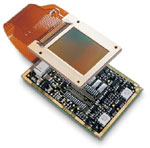Biometrics
is the methodology for recognizing or identifying persons based on
physiological or behavioral characteristics. Essentially all security features
are based on a combination of three key concepts. Security can be
based on something you have, something you know or something you are. While
tokens or passwords can copied or stolen, biometric identifiers like fingerprints are
much more difficult to reproduce or steal.
Currently, there are several physical traits which can
be used as Biometric identifiers. These include a persons facial shape, fingerprints, iris patterns, retina patterns,
hand geometry, speech, handwriting / keystroke order and finally
even wrist vein patterns. Most of these identifiers are very difficult to compromise,
and some like the keystroke order or speech recognition may be difficult to reproduce
consistently.
It's the task of the biometric product to apply
a mathematical algorithm to the identifier (retina, or fingerprint for example) to determine if
a user is who they are pretending to be. In devices where a finger print
is the means of identification, a small device will scan the fingerprint
of the user and momentarily record the fine details. This may
include features such as the finger prints' hills and valleys, the direction and
branching points, line endings and dozens of other minutiae.
 |
| The Infineon sensor |
The fingers features can
be acquired optically, thermally based on temperature differences between the
fingertip's valleys and ridges, by pressure sensor or via a capacitive sensor (essentially
a small silicon chip with many thousands of sensing elements). Infineon's "FingerTIP
sensor uses the capacity difference between the surface of the sensor and the
surface of the finger. The capacity measured at a ridge differs from that at a
valley. Thus, about 65.000 capacitors acquire the data in a field of 224 x 288
pixels and transform it into a digital signal."
Optical sensors, consisting of a lens or prism optical system with
CCD or CMOS camera measure light deflections produced by a finger on a sensor
surface. Thermal sensors rely on measuring temperature differences at the
fingertip so they can be influenced by changes in temperature in the surrounding
environment. Generally thermal sensors must operate in a O° C or above ambient
temperature.
